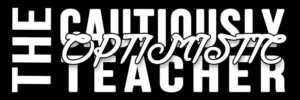Today’s class focuses on polishing writing fundamentals and building strong research skills. Students will begin with a quick review of linking verbs—a grammar cornerstone that helps improve sentence clarity. Next, they’ll move on to the essential skill of creating MLA in-text citations, learning how to properly give credit within their essays. Finally, any remaining time will be dedicated to finishing their rough drafts, incorporating today’s new skills into their work.
Linking Verbs Lesson
Start class by revisiting linking verbs, which connect the subject of a sentence to a word or phrase that describes or identifies it. These verbs—like is, seem, become, appear—don’t show action but instead help define relationships between ideas. Students often underestimate how much power a well-placed linking verb has in making their writing sound more polished and logical.
Encourage students to identify linking verbs in sample sentences and rewrite awkward ones for smoother flow. This quick review primes them for precision and clarity—skills they’ll need for their upcoming essay work.
MLA In-Text Citations
Now that students are deep into their essays, it’s time to make sure they know how to credit their sources properly. Today’s focus is MLA in-text citations—a crucial part of academic writing that ensures students avoid plagiarism and strengthen the credibility of their arguments.
Explain that in-text citations appear directly in the essay whenever a source is quoted, paraphrased, or referenced. For example:
(Smith 42)
Emphasize that the author’s last name and page number go inside the parentheses, without commas or abbreviations. If there’s no author, use the title instead. If there’s no page number, omit it.
Students can practice this skill using your provided worksheet or citation exercises. Encourage them to revisit their rough drafts and check every instance of borrowed information to confirm proper citation formatting.
Finish Rough Drafts
With the remaining class time, students should work on finalizing their rough drafts. Encourage them to review their essays for proper MLA formatting, ensure all sources are cited both in-text and on their Works Cited page, and check for smooth transitions between ideas.
You might circulate around the room, offering quick feedback on students’ in-text citations or helping them locate missing source details. Remind them: good writing isn’t just about ideas—it’s about giving credit where it’s due.

